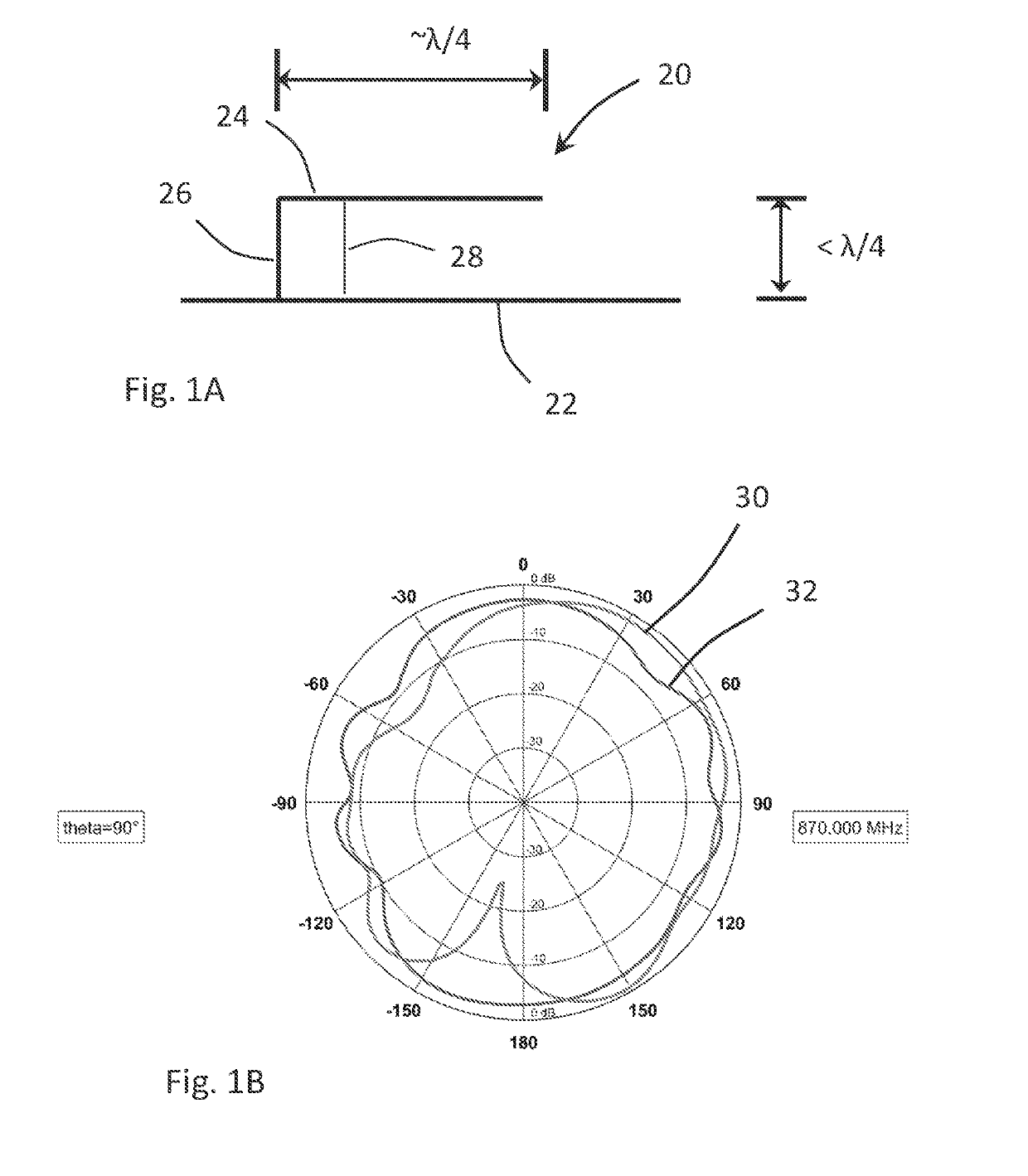Antenna structure for use with a horizontally polarized signal
a technology of antenna structure and horizontal polarization, applied in the field of antennas, can solve the problems of increasing aerodynamic drag, increasing the operating cost of the aircraft, and difficult to build, and achieve the effect of reducing the number of beam patterns that can be selected
- Summary
- Abstract
- Description
- Claims
- Application Information
AI Technical Summary
Benefits of technology
Problems solved by technology
Method used
Image
Examples
Embodiment Construction
[0031]The invention is directed to an antenna structure capable of processing an omnidirectional, horizontally polarized signal. Common to each embodiment of the antenna structure is at least one pair of quarter-wave patch antennas. To facilitate the description of these antenna structures, a single quarter-wave patch antenna is initially described.
[0032]With reference to FIGS. 1A and 1B, a quarter-wave patch antenna 20 and the operation of such an antenna are described. The quarter-wave patch antenna 20 includes a ground plane 22, a radiator patch 24, a shorting structure 26 for electrically connecting the ground plane 22 and the radiator patch 24, and a feed point 28 that provides the electrical connection for conveying a signal to and / or from the radiator patch 24. Further, the greatest horizontal distance (as measured along the ground plane 22) from a point at which the shorting structure 26 establishes an electrical connection with the ground plane 22 to a point associated with...
PUM
 Login to View More
Login to View More Abstract
Description
Claims
Application Information
 Login to View More
Login to View More - R&D
- Intellectual Property
- Life Sciences
- Materials
- Tech Scout
- Unparalleled Data Quality
- Higher Quality Content
- 60% Fewer Hallucinations
Browse by: Latest US Patents, China's latest patents, Technical Efficacy Thesaurus, Application Domain, Technology Topic, Popular Technical Reports.
© 2025 PatSnap. All rights reserved.Legal|Privacy policy|Modern Slavery Act Transparency Statement|Sitemap|About US| Contact US: help@patsnap.com



